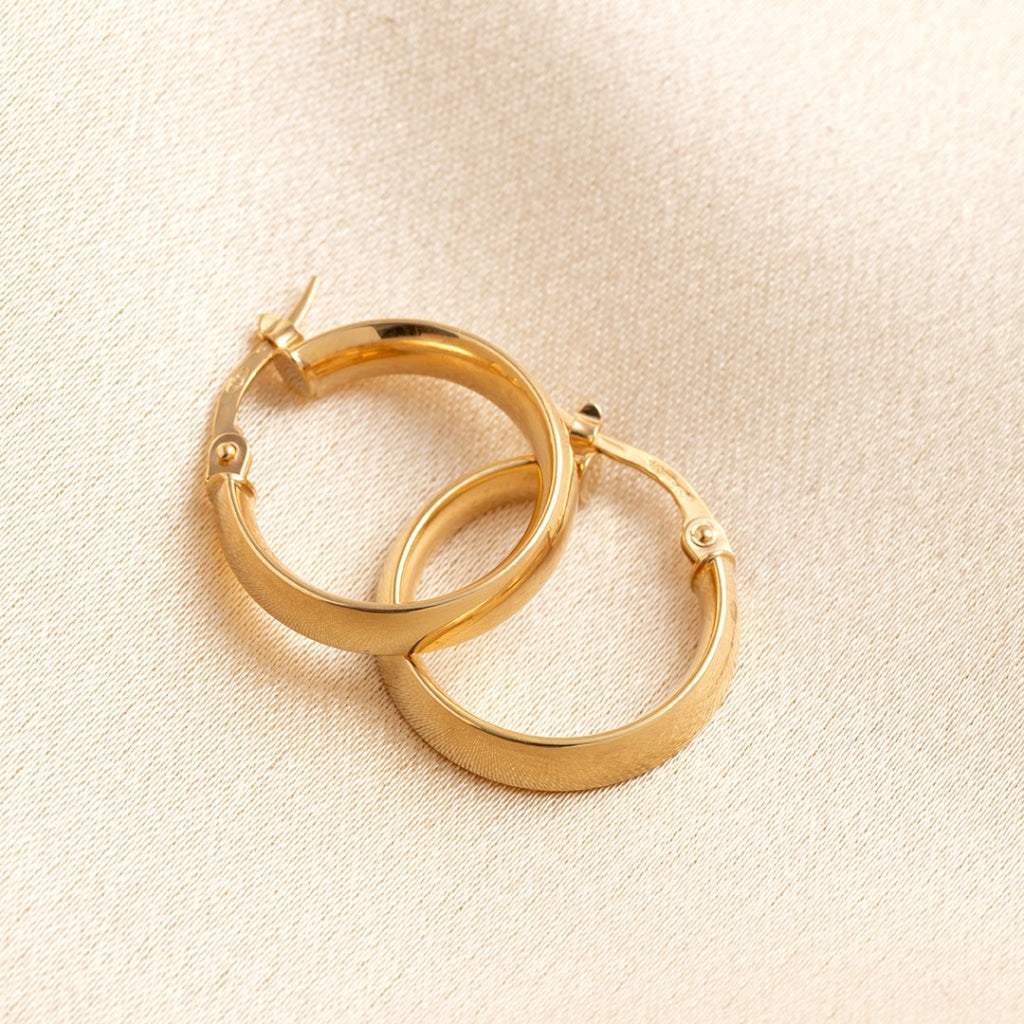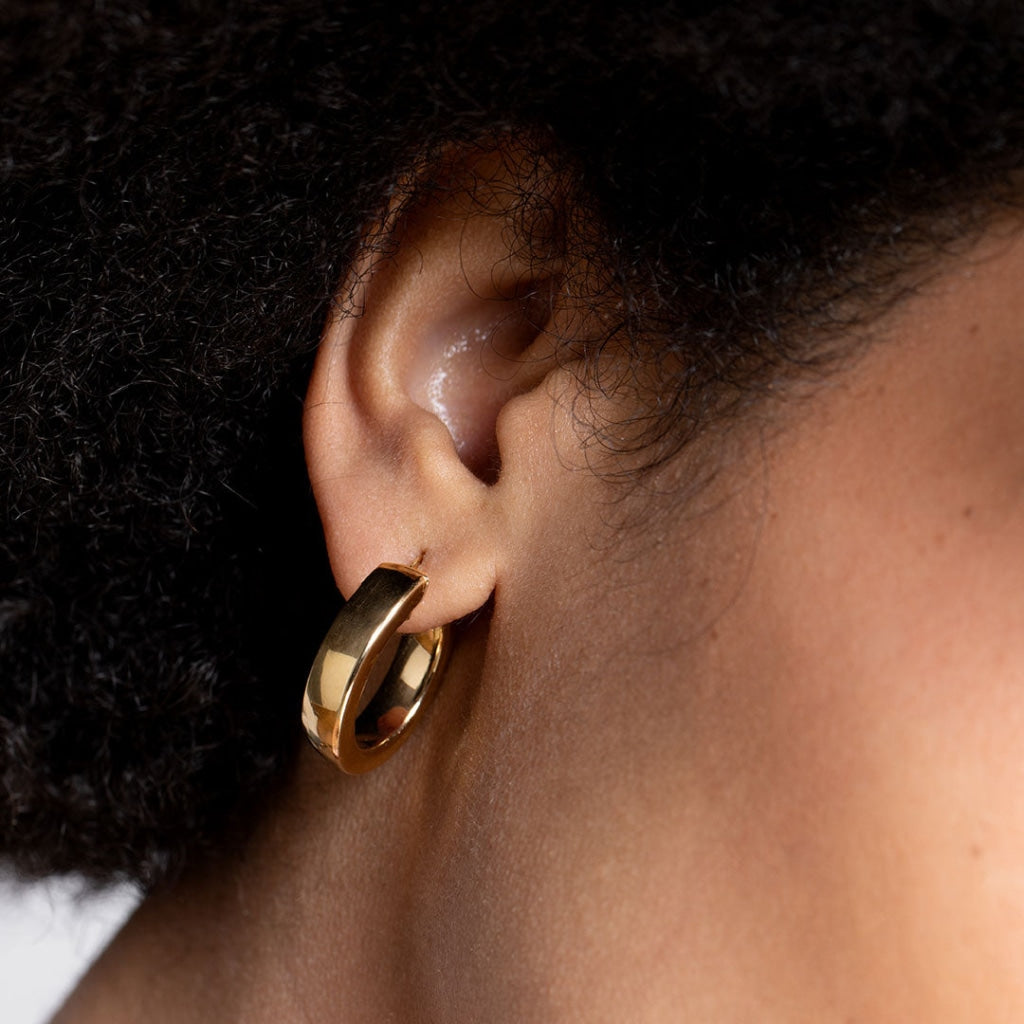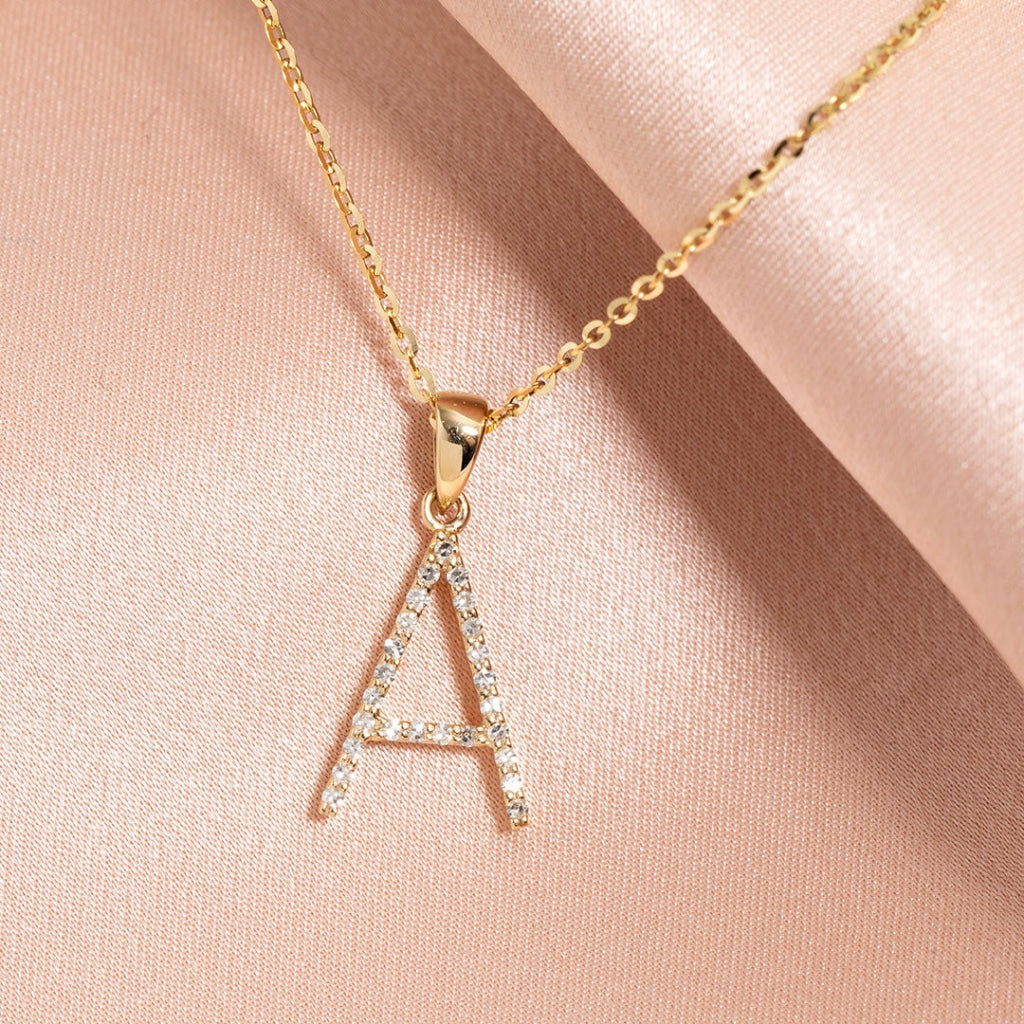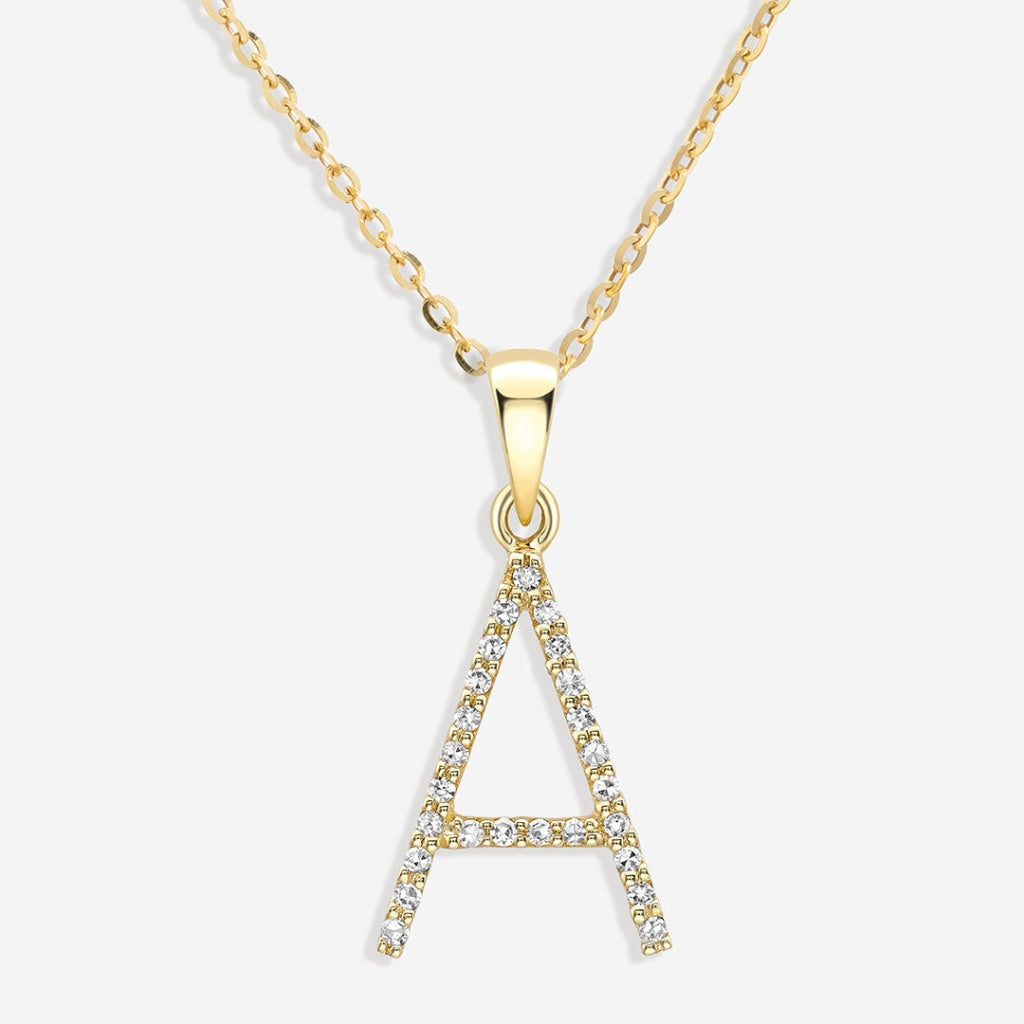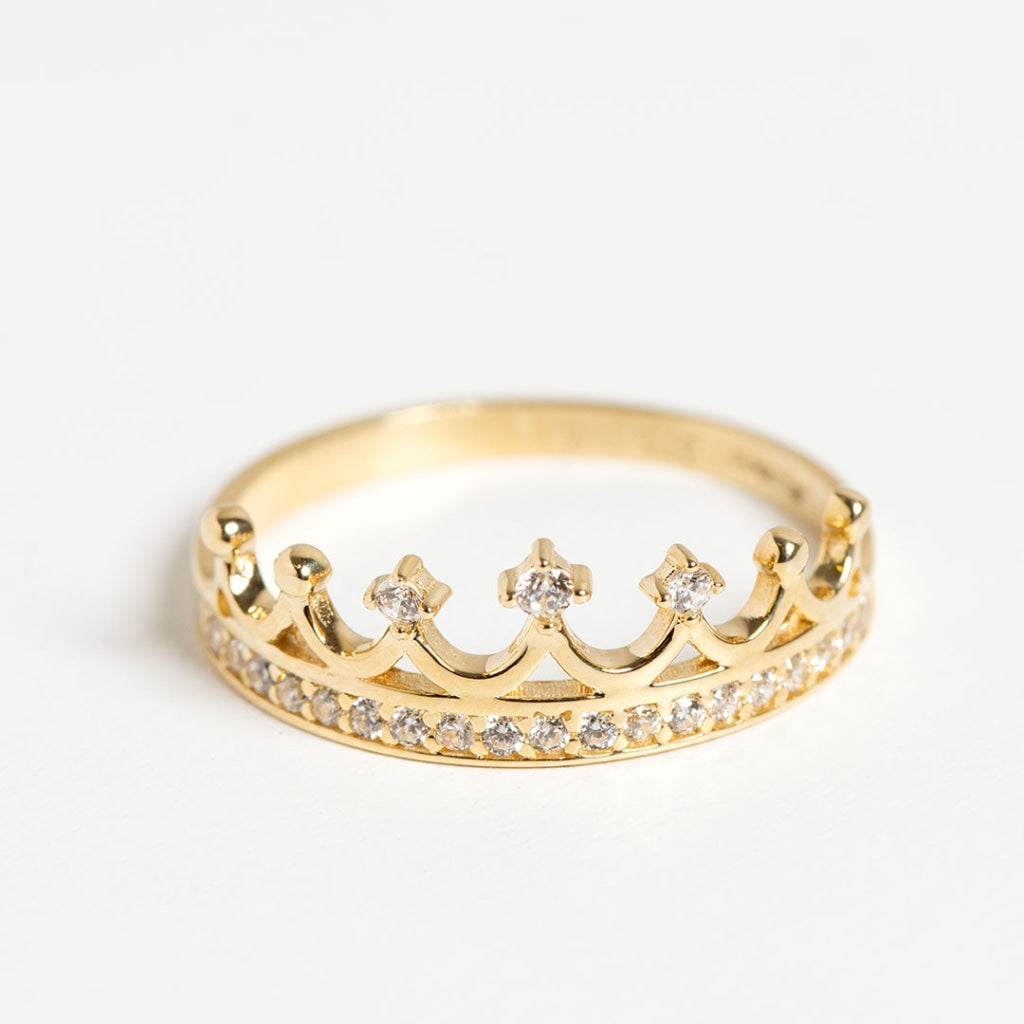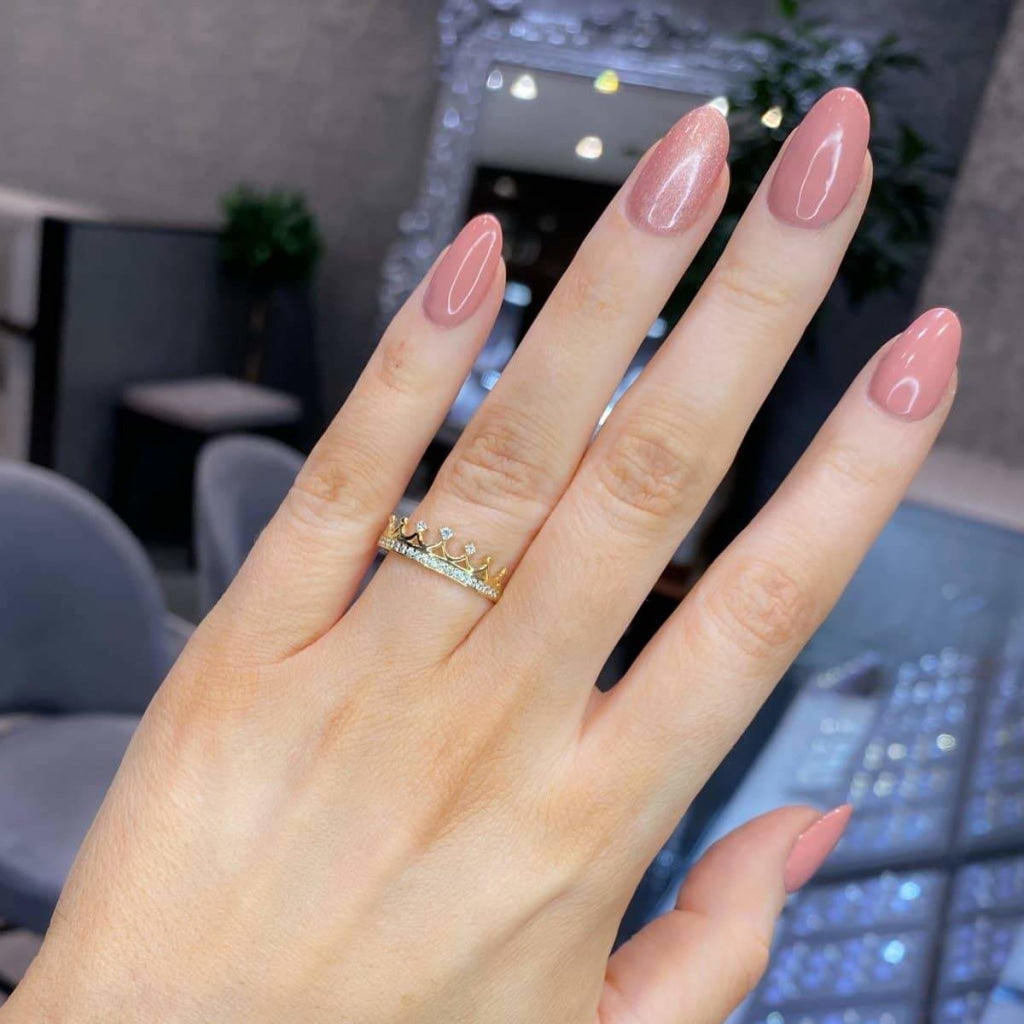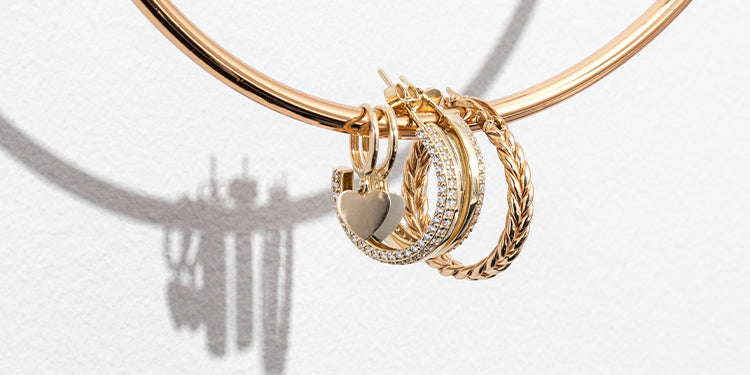According to Instagram influencers, multiple earrings are totally in style right now.
Cartilage earrings are bang on trend and everyone from Kendall Jenner to Bella Hadid has been spotted rocking the look.
But can you actually get multiple ear piercings at once? The answer is yes – but there are a few things you need to take into consideration before booking your appointment.
Our fine jewellery specialists here at Gear Jewellers in Dublin have put together a quick guide on what you need to know before heading to the piercing studio.
Before we head into the details, let's get a brief answer so you can find out more about whether you can get multiple ear piercings at once.
it is possible to get multiple piercings on your earlobe or in the outer cartilage in one sitting. Factors to consider include, current styles, aesthetics, healing time, and space available on your ear.
However, although you can get multiple piercings at once, your body will thank you for waiting a short time between piercings for each one to heal. This will help reduce the risk of infection and ensure that your piercings heal properly. Indeed, some piercers will only pierce one at a time.
Can you get multiple ear piercings at once?
So let's now dive into more detail and find out more about getting multiple ear piercings at once.
So we can understand a little more easily why it's not recommended to get multiple earrings at once, although it's possible, let's find out about how the body heals after a piercing.
How your body heals after a piercing
The outermost layer of skin is called the epidermis. This is the part of the skin that you can see. Underneath the epidermis is a layer of skin called the dermis. The dermis contains blood vessels, nerves, and sweat glands.
When you get a piercing, the needle goes through the epidermis and into the dermis. This damages the blood vessels and nerves, which causes bleeding and pain.
In its simplest terms, the epidermis is like a brick wall and the dermis is like the mortar holding the bricks together.
The body responds to this damage by sending cells called macrophages to the area.
Macrophages are a little like the iconic 80's Pac-Man; they eat anything that isn't supposed to be there including bacteria, dead cells, and debris.
As the macrophages clean up the area, they also stimulate the growth of new collagen fibres. Collagen is a protein that makes up the structure of our skin, hair, and nails.
The new collagen fibres help to repair the damage caused by the piercing and make the piercing site stronger.
The body responds to this damage by sending white blood cells to the area. White blood cells are part of the immune system and help to fight infection.
They also help to repair the damage by creating new skin cells.
This process of repair is commonly known as inflammation. The white blood cells help to clean up the area and start the healing process.
Is it painful when you have multiple ear piercings at once?
It can be, yes. But it really depends on your pain threshold and how well you handle pain in general. Some people feel more pain than others when they get a piercing.
Getting multiple piercings done at once can also be more uncomfortable than getting just one.
If you're worried about the pain, you can talk to your piercer about numbing options before you get started. They may be able to use a numbing cream on your skin to help ease the pain.
Also, check with your piercer that this procedure is possible, as some are not happy to piece multiple times in one sitting.
They may want you to come back for another appointment to get pierced again.
Before getting your piercings, don’t be afraid to ask the piercer any questions you may have. It’s important that you feel comfortable and confident with the person who is going to be piercing you.
Do multiple ear piercings increase the risk of infection?
Did you know that the average healing time for an earlobe piercing is 6-8 weeks, but cartilage piercings take significantly longer to heal, sometimes up to 4-6 months?
There is always a risk of infection with any piercing, no matter how many you get at once.
But the good news is that there are some things you can do to help prevent infection, like keeping your piercings clean. So let’s go through that next.
What can I do if I've had multiple ear piercings at once
If you do decide to have multiple ear piercings at once, or if you've decided that you would rather take each piercing gradually, whichever works best for you, then check out our top ten multiple piercing tips.
1. Choose a reputable piercer
When deciding where to get your piercings, it’s important to choose a reputable and clean piercing studio or shop. Avoid getting your piercings done at home as there is a higher risk of infection when piercings are not done in sterile conditions.
This is especially important if you are getting multiple piercings. Piercing studios need to be clean and use sterile needles and equipment to minimize the risk of infection.
You might even like to check to see if they are members of UKAPP.
UKAPP is a voluntary organization that strives to provide both industry professionals and the general public with education on safe piercing practices.
They also offer piercers the chance to become members of our organization by upholding the highest standards in their working environments.
2. Make sure the piercer is using sterile needles and tools.
Before getting piercings, including multiple ear piercings at once, make sure the piercer is using sterile needles and tools.
All of the piercer’s equipment should be properly sterilized before each use. The easiest way to find this out is by asking to see the sterilization equipment they use.
Most piercers are proud of their work and the hygiene practices they follow, and should be happy to show you how it’s done.
3. Clean your hands before and after handling your new piercings.
Be sure to wash your hands thoroughly with soap and water before touching or cleaning your new piercings.
A fundamental practice to prevent infection lies with hygiene. Clean hands are the easiest way to prevent the most common way of getting ear piercing infections.
4. Follow the piercer’s aftercare instructions.
After you get your piercings, the piercer will provide you with aftercare instructions. These instructions will likely include information on how to clean and care for your new piercings.
The instructions will vary depending on the type of piercing you get and who you go to, but they may include using a saline solution to clean the piercing and advise you to avoid certain activities or substances,
Be sure to follow your piercer’s instructions to help ensure that your piercing heals properly.
5. Avoid touching your piercings unnecessarily.
Once your piercings have healed, you may be tempted to touch them or play with them.
However, it’s important to avoid touching your piercings unnecessarily as this can increase the risk of infection.
If you must touch your piercing, make sure to wash your hands thoroughly first.
6. Be careful with hair products and makeup.
If you have a piercing in your ear, or even on your face, be careful when using hair products and makeup. Avoid getting any products on the piercing as this can cause irritation or infection.
If you must use products near your piercing, make sure to clean the area thoroughly before and afterwards.
7. Don’t use cleaning products on your piercing.
Cleaning products can be harsh and may irritate your piercing. Stick to using saline solution or soap and water to clean the area around your piercing.
8. Be cautious when swimming.
Swimming in pools or hot tubs can increase the risk of infection as the water can contain bacteria.
If you must swim, make sure to clean the area around your piercings afterwards and dry them thoroughly.
Avoid swimming in lakes or oceans as the water there has no chlorine unlike pools and hot tubs which means the infection risk could be even higher as it may contain more bacteria.
9. Don’t remove your piercings until they are healed.
Removing your piercing before it’s healed can cause the hole to close up and make it more difficult to re-pierce the area.
It can also increase the risk of infection.
10. Wait until piercings are fully healed before changing jewellery
Once your piercing has healed, you can change out the jewellery for something new.
But be careful not to put in anything too heavy or irritating as this can cause the piercing to become inflamed.
Beyond that, you can enjoy choosing from a range of different earrings. Check out some of the options below
Get multiple ear piercings at once - To finish on
So to answer your question, Can you get multiple ear piercings at once? Yes, you can ...but we recommend that you listen to most piercers’ advice and ideally, only pierce one area at a time.
This will help reduce the risk of infection and will make it easier for your piercings to heal. In the long run, you may be glad you exercised some caution.
So check out our store for a selection of elegant and stylish gold and silver earrings and a fabulous selection of cartilage jewellery to bring an on-trend and unique look to your multiple piercings.




